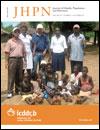Five Pond-centred Outbreaks of Cholera in Villages of West Bengal, India: Evidence for Focused Interventions
DOI:
https://doi.org/10.3329/jhpn.v29i5.8895Keywords:
Case-control studies, Cholera, Cohort studies, Cross-sectional studies, Disease outbreaks, Environment, Hygiene, Pond, Retrospective studies, Sanitation, Water pollution, IndiaAbstract
In rural West Bengal, outbreaks of cholera are often centred around ponds that is a feature of the environment. Five investigations of laboratory-confirmed, pond-centred outbreaks of cholera were reviewed. Case-control odds ratios were approximated with relative risks (RRs) as the incidence was low. The environment was investigated to understand how the pond(s) could have become contaminated and could have infected villagers. The five outbreaks of cholera in 2004-2008 led to 277 cases and three deaths (median attack rate: 51/1,000 people; case fatality: 1.1%; median age of case-patients: 22 years; median duration: 13 days, range: 6-15 days). Factors significantly (p<0.05) associated with cholera in the case-control (n=4) and cohort investigations (n=1) included washing utensils in ponds (4 outbreaks of cholera, RR range: 6-12), bathing (3 outbreaks of cholera, RR range: 3.5-9.3), and exposure to pond water, including drinking (2 outbreaks of cholera, RR range: 2.1-3.2), mouth washing (1 outbreak of cholera, RR: 4.8), and cooking (1 outbreak of cholera, RR: 3.0). Initial case-patients contaminated ponds through washing soiled clothes (n=4) or defaecation (n=1). Ubiquitous ponds used for many purposes transmit cholera in West Bengal. Focused health education, hygiene, and sanitation must protect villagers, particularly following the occurrence of an index case in a village that has ponds.
Key words: Case-control studies; Cholera; Cohort studies; Cross-sectional studies; Disease outbreaks; Environment; Hygiene; Pond; Retrospective studies; Sanitation; Water pollution; India
DOI: http://dx.doi.org/10.3329/jhpn.v29i5.8895
JHPN 2011; 29(5): 421-428
Downloads
279
217

